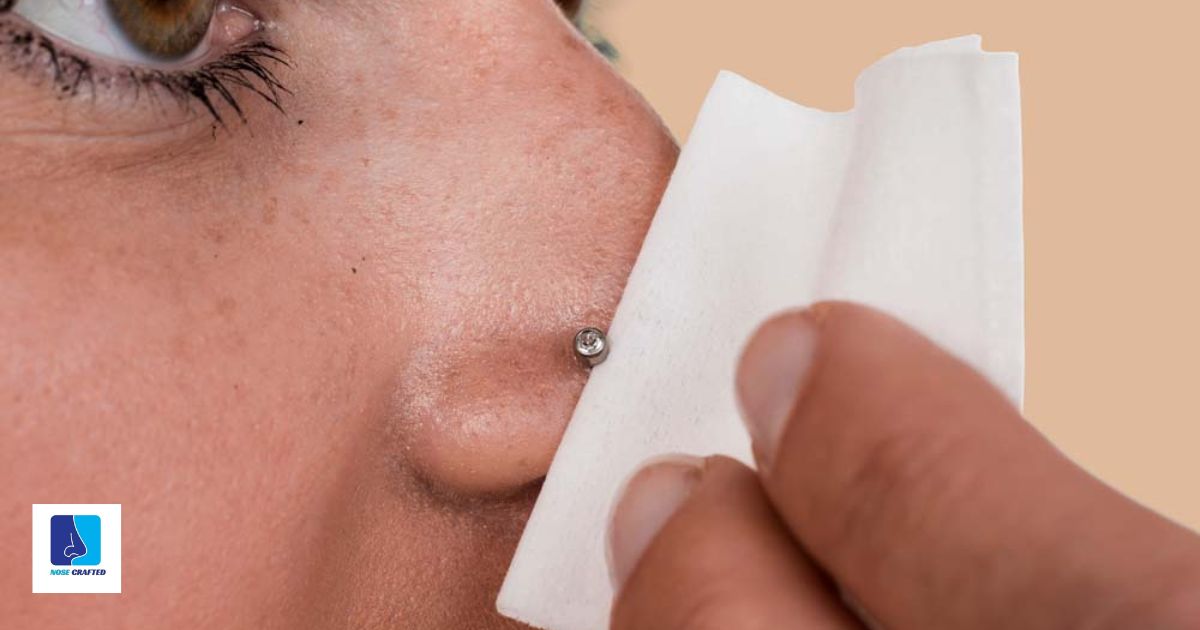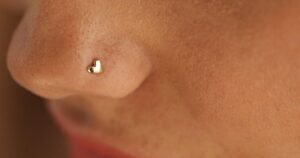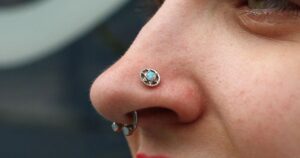Nose piercing is a form of body modification where a small hole is created in the tissue of the nose to insert decorative jewelry. It is a cultural and fashion practice that has been around for centuries, with various meanings in different societies. The procedure is usually done by professionals using a sterilized needle or a piercing gun.
Ready to make a splash without compromising your nose piercing? Discover the perfect solution to keep your piercing protected while enjoying a dip in the pool. Dive into our quick guide on How To Cover Nose Piercing For Swimming’ and ensure your style stays intact, both in and out of the water. Don’t let a piercing hold you back take the plunge confidently.
Covering your nose piercing while swimming is crucial to prevent irritation and infection. Use a waterproof adhesive bandage or a silicone nasal guard to shield your piercing from waterborne bacteria. Ensure the covering is secure to avoid any accidental dislodgment during your swim.
Methods for Covering Nose Piercing
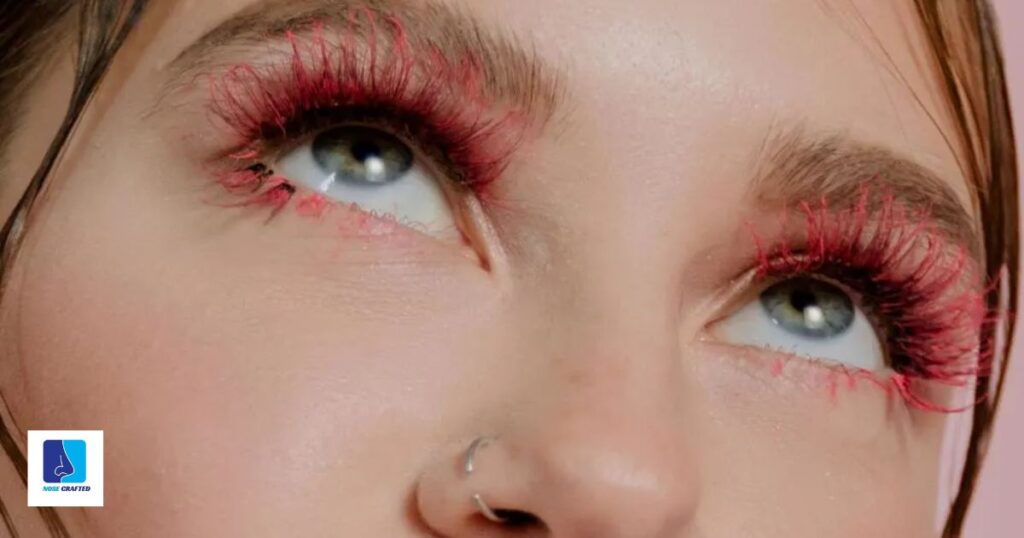
When it comes to safeguarding your nose piercing during swimming, various methods can be employed to ensure both protection and comfort. One effective option is the use of waterproof adhesive bandages. These bandages create a reliable barrier, shielding your piercing from water contaminants.
Another popular method is the use of silicone nasal guards. These guards are designed to fit comfortably over your nose piercing, preventing direct contact with water. Selecting the right size and ensuring a snug fit are crucial steps for effective protection. Unlike adhesive bandages, nasal guards offer reusable and durable coverage, making them a practical choice for those who frequent pools or engage in water activities regularly.
Waterproof Adhesive Bandages
Waterproof adhesive bandages are a practical solution for covering nose piercings during swimming. These bandages are designed to repel water, creating a protective barrier that shields the piercing from potential contaminants. To apply, simply clean and dry the area around the piercing, then place the adhesive bandage securely over it.
One advantage of waterproof adhesive bandages is their convenience. They are readily available at most pharmacies and come in various sizes, making it easy to find the right fit for your nose piercing. However, some individuals may find that the adhesive can cause irritation for those with sensitive skin, so it’s important to monitor your skin’s reaction and consider alternative methods if needed. Overall, these bandages offer a simple and accessible way to safeguard your nose piercing while enjoying water activities.
Proper Application Techniques
Certainly! Here’s the modified paragraph with the anchor text added naturally:
“Proper application techniques are essential when covering your nose piercing for swimming. Ensure the skin around the piercing is clean and dry before applying a waterproof adhesive bandage or silicone nasal guard. Smooth application not only enhances protection but also minimizes the risk of irritation, allowing you to enjoy your swim worry-free. If you’re wondering, ‘piercing can you swim‘ with the right precautions, absolutely!
Silicone Nasal Guards
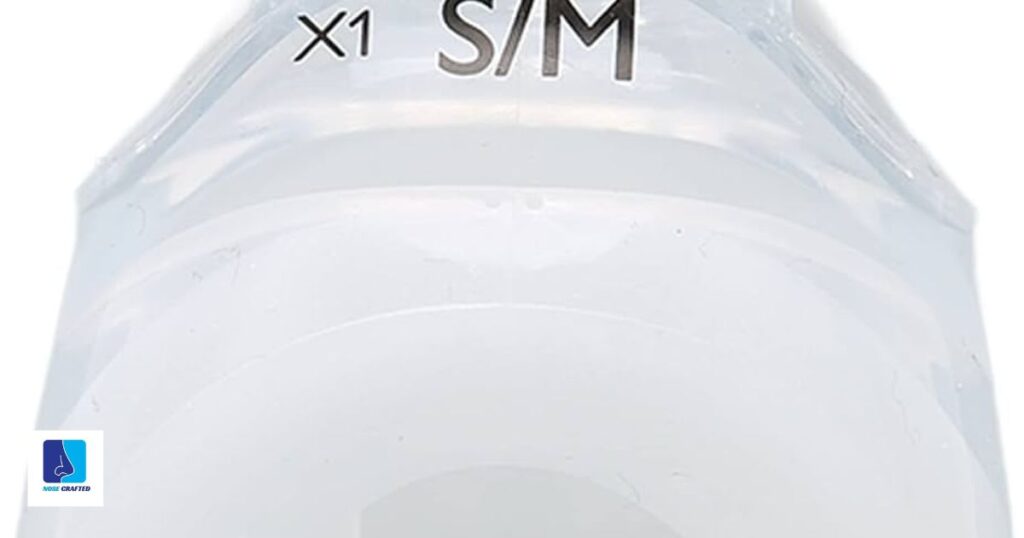
Silicone Nasal Guards are a practical and effective solution for individuals with nose piercings who want to enjoy swimming without risking infection or irritation. These guards are crafted from soft, flexible silicone, providing a comfortable and secure covering for the piercing. Available in various shapes and sizes, they can be easily customized to fit different nose shapes, ensuring a snug and protective seal.
Unlike traditional adhesive bandages, Silicone Nasal Guards are reusable and can withstand prolonged exposure to water, making them an ideal choice for frequent swimmers. Additionally, their transparent design allows for discreet coverage, letting individuals confidently showcase their style while keeping their nose piercings shielded from potential harm.
Choosing the Right Guard
When selecting the right guard for your nose piercing during swimming, consider opting for a soft and flexible silicone guard that comfortably fits your nose shape. Ensure it provides a secure seal to keep water out and is designed specifically for piercing protection. Prioritize guards with adjustable features for a customized and snug fit, allowing you to swim worry-free while preserving your piercing’s integrity.
How to Wear it Securely
To wear your nose piercing cover securely, make sure the silicone nasal guard fits snugly over the piercing. Ensure it is positioned correctly and covers the entire area to prevent water exposure. Gently press and secure the edges to keep it in place, allowing you to swim confidently without worrying about your piercing.
How To Cover Nose Piercing For Work

| Method | Description |
| Flesh-Colored Retainers | Use discreet, flesh-colored retainers to make your nose piercing less noticeable at the workplace. Ensure they match your skin tone for a subtle appearance. |
| Concealing Makeup | Apply concealing makeup around the nose piercing to blend it in with your skin, providing a professional look. Choose a long-lasting and waterproof formula for durability. |
| Clear or Nude Studs | Opt for clear or nude-colored studs that are less conspicuous. These can be an elegant and subtle choice, maintaining a polished appearance while adhering to workplace norms. |
| Covering with Bandages | In some workplaces, covering the piercing with a small, clean bandage may be acceptable. Ensure it’s neat and secure, minimizing distraction while adhering to workplace policies. |
Remember to check your workplace’s dress code and policies regarding piercings to ensure compliance with their guidelines.
How To Cover Nose Piercing For School
Covering your nose piercing for school is a simple and considerate practice. Opt for small, flesh-toned adhesive bandages or transparent piercing retainers to maintain a discreet look while adhering to school policies. Ensure that the chosen covering is securely in place before heading to school, minimizing the chances of accidental exposure during daily activities. Taking these precautions not only promotes a professional appearance but also helps create a comfortable and distraction-free environment for both you and your peers.
It’s essential to be mindful of any specific rules or guidelines your school may have regarding piercings. Some schools may have clear policies on visible body modifications, so understanding and adhering to these regulations will contribute to a positive and hassle-free school experience.
Nose Piercing Retainer
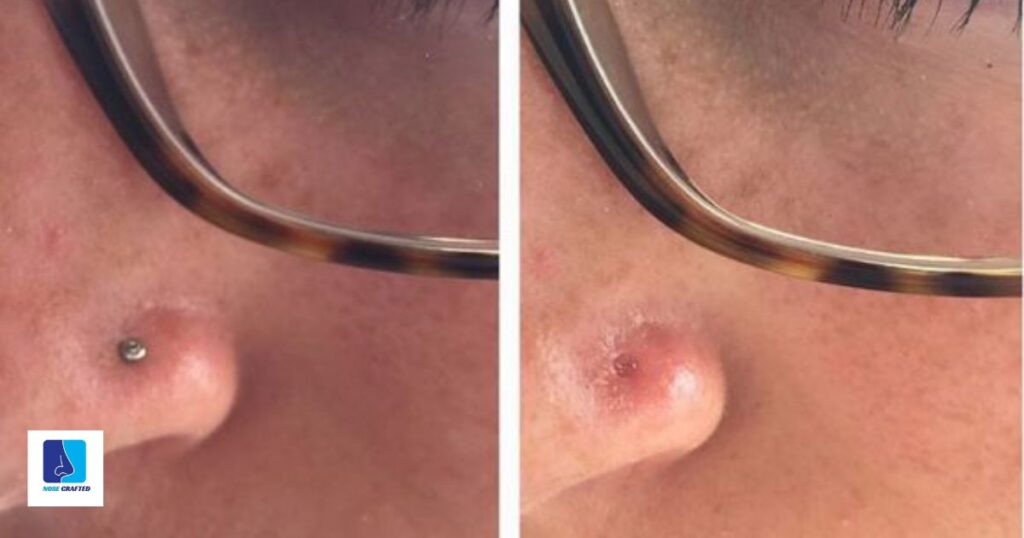
A nose piercing retainer is a discreet and often transparent piece of jewelry designed to conceal a nose piercing without drawing attention. Made from materials like clear acrylic or bioflex, these retainers are ideal for situations where a visible piercing may be inappropriate, such as in professional settings or conservative environments. The retainer maintains the piercing’s integrity while providing a low-profile appearance, allowing individuals to keep their piercing while adhering to specific dress codes or preferences.
Moreover, nose piercing retainers are versatile and comfortable, making them suitable for various activities like sports or situations where traditional jewelry might be impractical. Their unobtrusive nature ensures that the piercing remains discreet, offering a practical solution for those who wish to enjoy the benefits of a nose piercing without the visibility of traditional jewelry.
Competitive Swimmer Nose Piercing
Competitive swimmers with nose piercings often face the challenge of maintaining their piercing’s well-being while spending extensive hours in the pool. The constant exposure to chlorinated water can lead to irritation and potential infections. To address this, many swimmers opt for specialized waterproof covers, like silicone nasal guards or adhesive bandages, ensuring their nose piercings stay protected during rigorous training sessions and competitions.
For these athletes, a balance between their passion for swimming and their commitment to body art is crucial. Proper care, choosing the right covering method, and staying vigilant for any signs of irritation are essential steps in maintaining a healthy nose piercing while pursuing excellence in competitive swimming.
How To Cover Nose Piercing For Sports
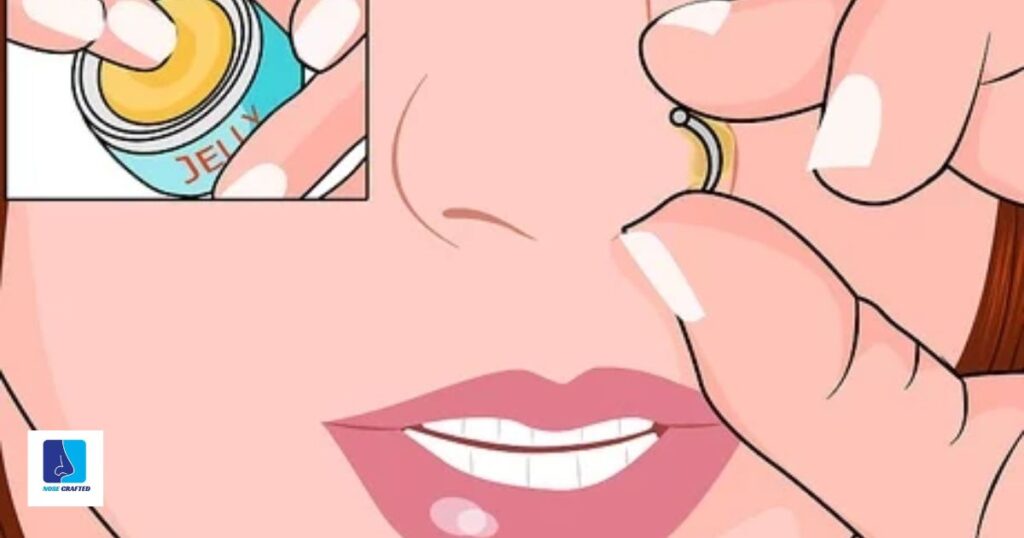
Engaging in sports with a nose piercing requires a thoughtful approach to protect your piercing and prevent potential discomfort or injury. One effective method is using a high-quality adhesive bandage specifically designed for sports activities. Ensure the bandage is waterproof and securely covers the piercing to shield it from sweat and external elements during physical exertion.
For those who prefer a discreet option, silicone nose rings or retainers can be a practical choice. These soft, pliable materials are less likely to cause irritation during sports, and they maintain the appearance of a piercing without the worry of damage. Remember to clean your nose piercing thoroughly after sports activities to prevent infection, and consult with your piercer for personalized advice on the best method to cover and protect your piercing during various sports.
Will My Nose Piercing Fall Out If I Go Swimming
Worrying about your nose piercing falling out while swimming is a common concern, but with proper precautions, you can enjoy the water without any issues. Nose piercings are generally secure if they have healed properly. However, to prevent accidental dislodgment, consider using a waterproof adhesive bandage or a silicone nasal guard. These simple solutions offer an extra layer of protection, ensuring that your nose piercing stays in place even during water activities.
Additionally, avoid excessive touching or twisting of the piercing, and be mindful of any signs of irritation or discomfort. By taking a few precautionary measures, you can confidently dive into the water and enjoy your swim without the fear of your nose piercing falling out.
How Long To Wait Before Swimming With Nose Piercing

After getting a nose piercing, it’s crucial to allow sufficient time for the healing process before taking a plunge into the pool. Generally, experts recommend waiting at least four to six weeks before swimming with a new nose piercing. During this period, your body works to form a protective layer around the piercing, reducing the risk of infection or complications.
Individual healing times may vary, and it’s essential to listen to your body. If you experience any redness, swelling, or discharge, it’s a sign that your piercing may need more time to heal. Patience is key in ensuring a successful and comfortable transition from the piercing chair to the swimming pool, so take the time needed to safeguard your piercing and enjoy the water worry-free.
FAQ,s
How do I protect my nose piercing while swimming?
To protect your nose piercing while swimming, use a waterproof adhesive bandage or a silicone nasal guard to create a barrier against waterborne bacteria.
Can I swim if I just got my nose pierced?
It’s advisable to wait at least four to six weeks before swimming after getting a nose piercing to allow for proper healing and reduce the risk of infection.
How do you waterproof a nose piercing?
To waterproof a nose piercing, use a waterproof adhesive bandage or a silicone nasal guard to create a barrier that shields the piercing from water during activities like swimming.
How do you protect your piercing when swimming?
To protect your piercing while swimming, use waterproof adhesive bandages or silicone nasal guards, ensuring secure coverage to prevent water exposure.
Conclusion
In conclusion, safeguarding your nose piercing while swimming is paramount to ensure a healthy and uncomplicated healing process. Whether you choose waterproof adhesive bandages or silicone nasal guards, the key lies in adopting a protective measure that suits your lifestyle and preferences. The delicate nature of a healing piercing requires patience and attention, emphasizing the importance of allowing sufficient time for the piercing to establish a protective barrier.
Taking the necessary precautions not only prevents potential infections but also allows individuals to confidently enjoy water activities without compromising their style. Remember, the journey from the piercing chair to the swimming pool is unique for everyone, so be attuned to your body’s signals and adjust your protective measures accordingly.
